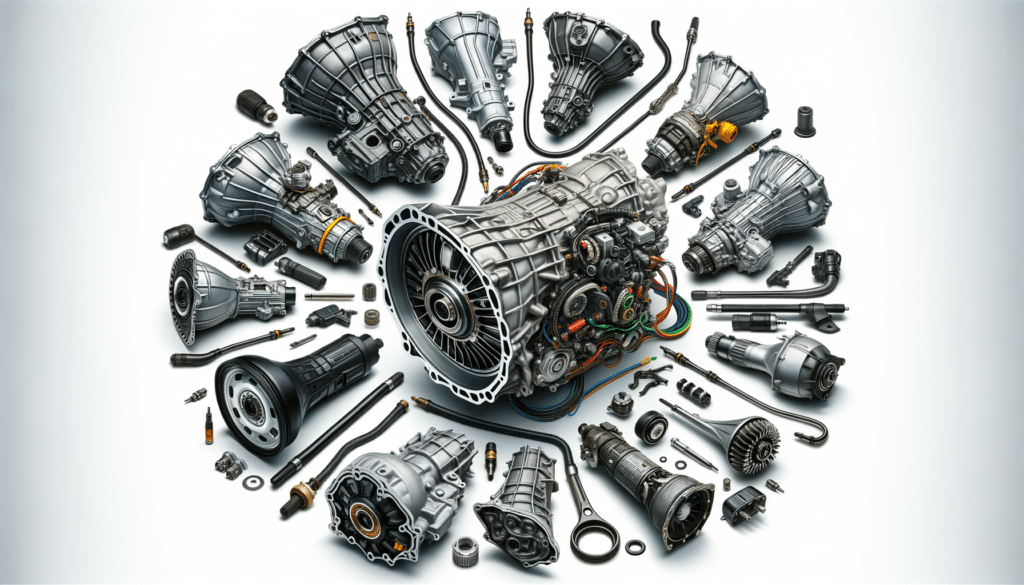Introduction to Transmissions: Understanding the Basics
In the world of automotive engineering, transmissions play a pivotal role in ensuring that vehicles operate smoothly and efficiently. Whether you’re a car enthusiast or a vehicle owner, understanding the different types of transmissions can be incredibly beneficial. This guide delves into the intricacies of automatic transmissions, explores the market for used transmissions, and compares remanufactured transmissions with new ones. By the end of this article, you will have a comprehensive understanding of the pricing and quality differences, enabling you to make informed decisions.
Automatic Transmissions: A Closer Look
Automatic transmissions have revolutionized the driving experience by offering seamless gear shifts without manual intervention. They are designed to automatically change gear ratios as the vehicle moves, providing a smoother and more comfortable ride. The convenience offered by automatic transmissions has made them a popular choice among drivers who prefer an effortless driving experience.
One of the key components of an automatic transmission is the torque converter, which replaces the clutch found in manual transmissions. This allows the engine to continue running while the vehicle is stationary. Modern automatic transmissions are equipped with advanced technologies such as electronic controls and adaptive learning capabilities, which adjust the shifting patterns based on the driver’s behavior and road conditions.
When considering an automatic transmission, it’s important to weigh the benefits against potential drawbacks. While they offer ease of use and comfort, automatic transmissions can be more expensive to repair than their manual counterparts. Additionally, some drivers feel that they have less control over the vehicle, particularly in performance driving scenarios.
Exploring Used Transmission Prices
Purchasing a used transmission can be a cost-effective solution for vehicle owners looking to replace a faulty transmission without breaking the bank. Used transmissions are typically sourced from vehicles that have been dismantled due to accidents or other reasons. This option is particularly appealing to those who own older vehicles where the cost of a new transmission might exceed the vehicle’s value.
The price of a used transmission can vary significantly based on factors such as the make and model of the vehicle, the transmission’s mileage, and its overall condition. On average, used transmissions can range from a few hundred to a couple of thousand dollars. It’s crucial to purchase from reputable sellers who provide warranties or guarantees, ensuring that the transmission is in good working condition.
Before purchasing a used transmission, it’s advisable to conduct thorough research and consult with a trusted mechanic. This ensures that you choose a transmission that is compatible with your vehicle and meets your performance expectations. Additionally, understanding the history of the transmission, such as its previous usage and maintenance records, can provide valuable insights into its reliability.
Remanufactured Transmissions vs New Transmissions
When it comes to replacing a transmission, vehicle owners often face the choice between remanufactured and new transmissions. Each option has its own set of advantages and considerations, making it essential to understand their differences.
Remanufactured transmissions are essentially used transmissions that have been disassembled, cleaned, and reassembled with new components where necessary. They undergo rigorous testing to ensure they meet or exceed original equipment manufacturer (OEM) standards. This process not only restores the transmission to a like-new condition but also offers a more environmentally friendly option by recycling existing parts.
On the other hand, new transmissions are factory-fresh units that have never been used. They come with the assurance of advanced engineering and the latest technological advancements, often accompanied by comprehensive warranties. However, this peace of mind comes at a higher cost compared to remanufactured options.
Deciding between a remanufactured and a new transmission depends on several factors, including budget, vehicle age, and personal preferences. Remanufactured transmissions are generally more affordable and offer a balance between cost and reliability, while new transmissions provide unmatched assurance of quality and longevity.
Conclusion: Making an Informed Decision
Understanding the nuances of transmission options is crucial for any vehicle owner considering a replacement. Whether you’re leaning towards an automatic, used, remanufactured, or new transmission, each choice comes with its own set of benefits and challenges. By weighing the cost, reliability, and compatibility with your vehicle, you can make a well-informed decision that aligns with your driving needs and budget.
In summary, the decision to invest in a transmission—be it used, remanufactured, or new—requires careful consideration and research. With the insights provided in this guide, you are now equipped to navigate the complexities of transmission pricing and quality, ensuring a choice that enhances your vehicle’s performance and longevity.


